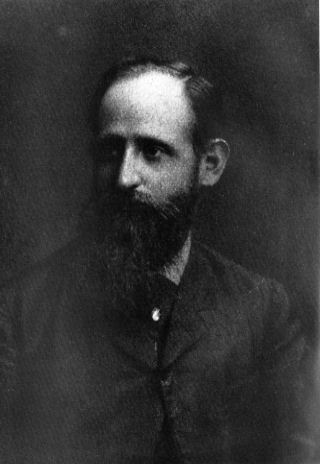<Back to Index>
- Physician Josef Breuer, 1842
PAGE SPONSOR

Josef Breuer (January 15, 1842 Vienna – June 20, 1925 Vienna) was an Austrian physician whose works laid the foundation of psychoanalysis.
Born in Vienna, his father, Leopold Breuer, taught religion in Vienna's Jewish
community. Breuer's mother died when he was quite young, and he was
raised by his maternal grandmother and educated by his father until the
age of eight. He graduated from the Akademisches Gymnasium of Vienna in 1858 and then studied at the university for one year, before enrolling in the medical school of the University of Vienna. He passed his medical exams in 1867 and went to work as assistant to the internist Johann Oppolzer at the university.
A close friend, mentor, and collaborator with Sigmund Freud, Breuer is perhaps best known for his work with Anna O. (the pseudonym of Bertha Pappenheim), a woman suffering from "paralysis of her limbs, and anaesthesias, as well as disturbances of vision and speech."
Breuer observed that her symptoms were reduced or disappeared after she described them to him. Anna O. humorously called this procedure chimney sweeping. She also coined the more serious appellation for this form of therapy, "her talking cure," which is widely regarded as the basis of Freudian psychoanalysis.
Ernest Jones considered: "Freud was greatly interested in hearing of the case of Anna O, which [...] made a deep impression on him"; and in his 1909 Five Lectures on Psycho - Analysis, Freud generously pointed out: "I was a student and working for my final examinations at the time when [...] Breuer, first (in 1880-2) made use of this procedure. [...] Never before had anyone removed a hysterical symptom by such a method."
Freud and Breuer documented their discussions of Anna O., along with other case studies, in their 1895 book, Studies on Hysteria. These discussion of Breuer's treatment of Anna O. became "a formative basis of Freudian theory and psychoanalytic practice; especially the importance of fantasies (in extreme cases, hallucinations), hysteria [...], and the concept and method of catharsis which were Breuer's major contributions."
The two men became increasingly estranged at the same time, however,
and from a Freudian standpoint, "while Breuer, with his intelligent and
amorous patient Anna O., had unwittingly laid the groundwork for
psychoanalysis, it was Freud who drew the consequences from Breuer's
case."
Breuer, working under Ewald Hering at the military medical school in Vienna, was the first to demonstrate the role of the vagus nerve in the reflex nature of respiration. This was a departure from previous physiological understanding, and changed the way scientists viewed the relationship of the lungs to the nervous system. The mechanism is now known as the Hering – Breuer reflex.
Independent of each other in 1873, Breuer and the physicist and mathematician Ernst Mach discovered how the sense of balance (i.e., the perception of the head’s imbalance) functions: that it is managed by information the brain receives from the movement of a fluid in the semicircular canals of the inner ear. That the sense of balance depends on the three semicircular canals was discovered in 1870 by the physiologist Friedrich Goltz, but Goltz did not discover how the balance sensing apparatus functions.
In 1894, Breuer was elected a Corresponding Member of the Vienna Academy of Science.
Breuer married Mathilde Altmann in 1868, and they had five children. His daughter Dora later committed suicide rather than be deported by the Nazis. Another one of his daughters, Margarete Schiff, perished in Theresienstadt on September 9, 1942. Breuer's granddaughter, Hanna Schiff, died while imprisoned by the Nazis.